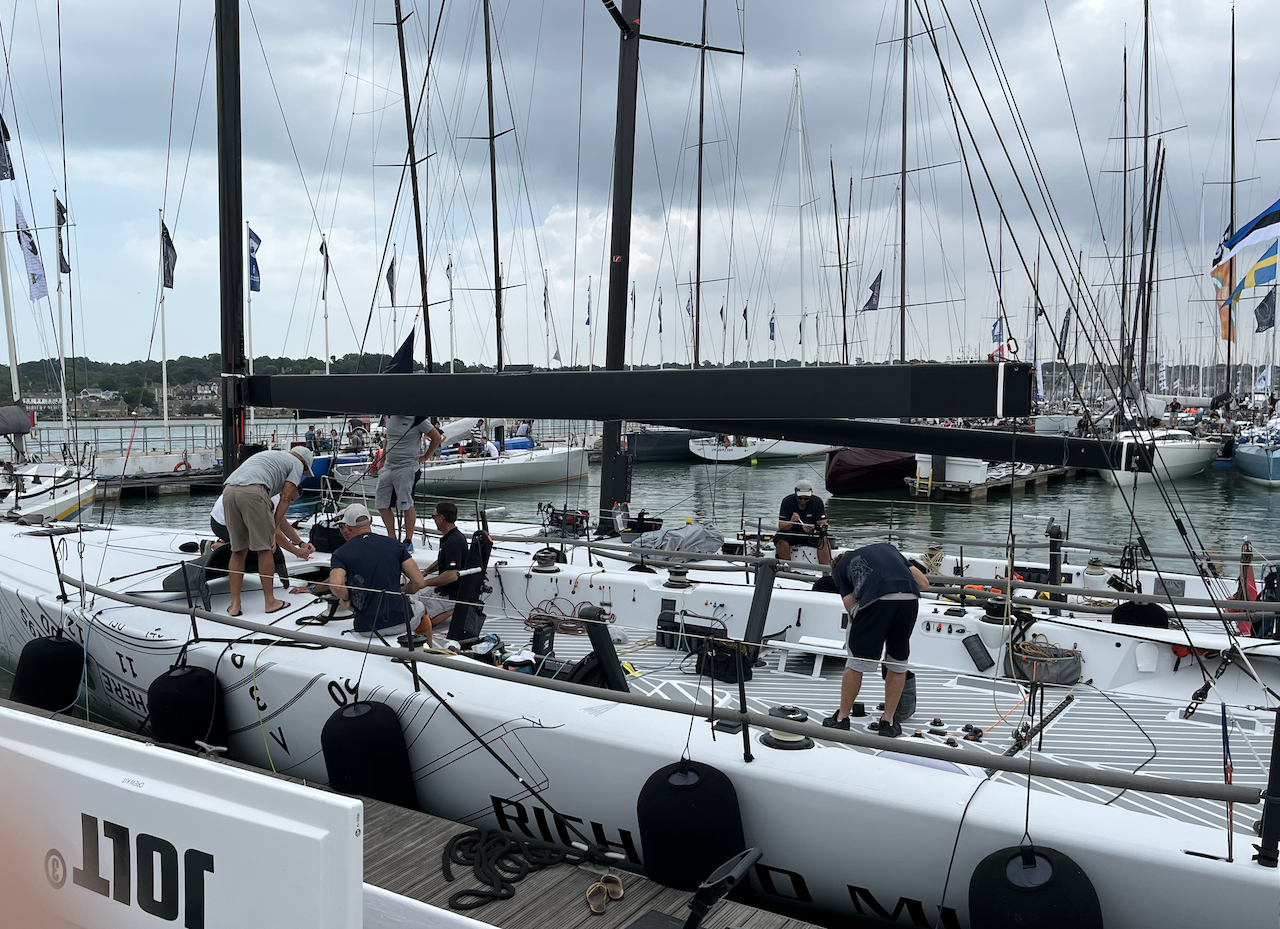Monaco’s Thunderbolt in the 2025 Admiral’s Cup

For a club long admired for its Mediterranean elegance and offshore pedigree, this was more than just a victory. It was a statement. And Jolt was the point of the spear.
Jolt 3 & Jolt 6
Jolt 3, a refined TP52-class race yacht, helmed by Britain’s Peter Harrison, served as Monaco’s weapon of choice in the AC1 division—the big boat class. This is a yacht designed for one thing only: winning. A modern composite hull, high-modulus carbon spars, and a brutally efficient sail plan made Jolt 3 a greyhound inshore and a tank offshore.
Her smaller sibling, Jolt 6, a Carkeek 40 skippered by Pierre Casiraghi—the princely sailor himself—raced in the AC2 division. Fast, light, and devastatingly agile, Jolt 6 came into the event with something to prove.
Together, these two formed a cohesive, high-performance unit in a competition that demands not just boat speed but tactical endurance and team cohesion across wildly different racing formats.
The Format: Welcome to Offshore Mayhem
The Admiral’s Cup, organised by the Royal Ocean Racing Club (RORC), returned in 2025 after a 23-year hiatus. Held out of Cowes, England—spiritual home of yacht racing—the new format included:
A Channel Race to test night navigation and endurance (coefficient 2)
Three days of tight Solent inshore racing (classic dogfight sailing)
A Grand Finale with the Rolex Fastnet Race, 695 nautical miles of hard offshore punishment from Cowes to Fastnet Rock and back to Cherbourg (coefficient 3)
It was a campaign built for the brave, and Jolt took to it like a cutter to canvas.
The Duel: Battle on the Brine
From the get-go, Jolt 3 posted consistent finishes—tight mark roundings, smart shifts, and powerful reaches gave Harrison’s crew a solid base. But it was Jolt 6 that delivered the hammer blow.
In the Fastnet leg—arguably the most prestigious offshore race in the world—Jolt 6 sailed like a demon through confused seas and fickle breezes, clawing past the competition and sealing her class win by a scant 2 minutes and 45 seconds. It was offshore chess at 15 knots, and Navigator Will Harris deserves more than one free round at the Yacht Club bar for calling it right.
The combined effort saw Monaco crowned overall champions—the first time ever a team flying the principality’s red and white colours had hoisted the Admiral’s Cup.
The Voices Behind Victory
Pierre Casiraghi, ever the understated helmsman, put it best:
“Honestly, I still can’t believe what we’ve achieved. To win the Admiral’s Cup in its revival year—and Monaco’s first attempt—is beyond words.”
Peter Harrison added with a grin:
“I doubt I’ll ever top this. Two boats, one goal, and a campaign executed to perfection.”
The team’s shore crew, strategists, and logistics team kept the campaign watertight, while the sailors executed each leg like the seasoned gladiators they are.
Why Jolt Mattered
The Jolt story is more than just line honours and corrected time. It was a showcase of:
Meticulous Preparation: Both boats were tuned, trained, and teched-out months in advance.
Tactical Acumen: Monaco nailed tidal gates, wind shifts, and course strategies, especially when other top-tier teams stumbled.
Old-School Seamanship: In the Rolex Fastnet, the race was won by consistency, not just speed. Jolt delivered both.
In a sport where inches matter, and the difference between glory and anonymity can come down to a sail change or waypoint decision, Jolt 3 and Jolt 6 wrote their names in yachting lore.
Heritage Meets Hustle
In a sea of carbon, tech, and GPS overlays, Jolt reminded us that it still takes grit, instinct, and no small measure of nerve to win at the highest level.
Monaco, a first-time winner. Jolt, a name that now belongs on the same scroll as Drum, Ragamuffin, and Marionette. The Admiral’s Cup has been many things over its 70-year history—but in 2025, it was Jolt that brought it thundering back to life.










